Southwest Michigan field crops update – August 18, 2022
Corn and soybean are moving toward the end of the grain fill period, so timely rain or irrigation will be key heading into the second half of August.

Weather
Temperatures this past week were 3-5 degrees cooler than normal on average in the southwest. We are still nearly a week ahead on heat units but picked up only 168 growing degree days (GDD, base 40 for alfalfa) or 100 GDD50 (for corn and soybean) this past week at the Kalamazoo Enviroweather station. The forecasted reference evapotranspiration (FRET) rate will be lower at 1.0-1.1 inches this coming week with daily rates of around 0.15 inch ranging from 0.20 inch on Friday to 0.10 inch on Sunday. The forecast predicts the addition of 200 GDD40 or 130 GDD50 in the coming week. Both the 6-10 day and 8-14 day outlooks call for normal temperatures during the last week of August, although MSU ag climatologist Jeff Andresen says he suspects that NOAA may be changing that to warmer than normal with subsequent releases of the outlooks.
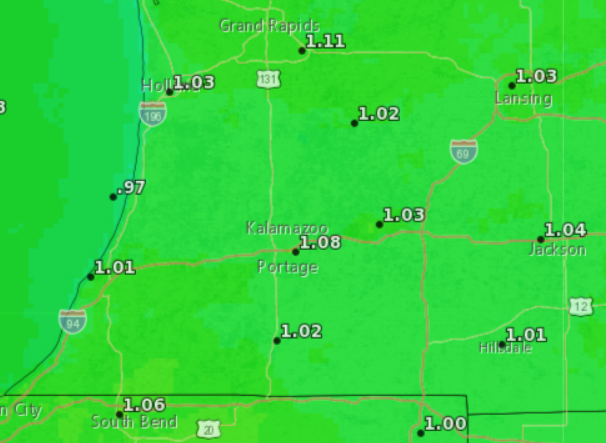
Precipitation this past week was highly variable in the region ranging from less than a tenth of an inch in the southwest corner to over 3 inches further north. For those of us weather geeks who watched the storm track last weekend, it was very interesting to watch the front move along the direction of the front, creating plenty of haves and have-nots. Andresen says that system was highly unusual for this time of year and more reflects a cool-season event. That system was the primary source of rainfall so far in August, so rainfall this month ranged from 2 inches below normal to 2 inches above depending on where you were in relation to that storm track. The forecast for the coming week is for drier than normal conditions with only 0.25-0.75 inch of rain predicted, essentially all of that coming Saturday night into Sunday. The medium-range outlooks both call for near-average chances of precipitation during the last week of August.

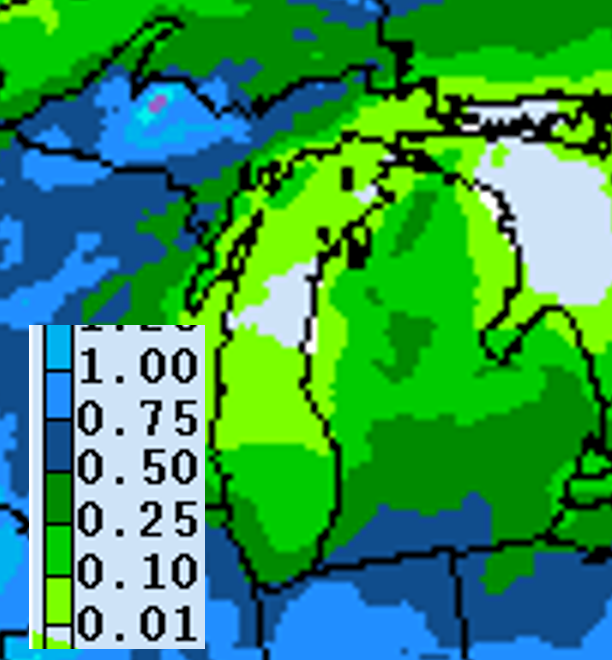
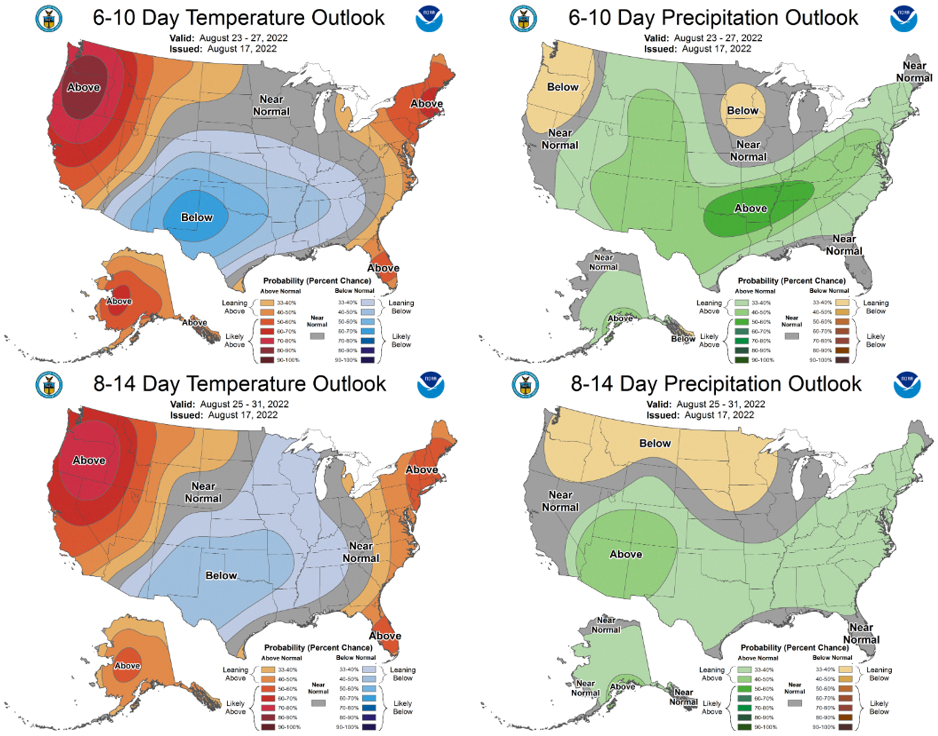
Crops and pests
If you are not already signed up to receive the MSU Extension Field Crops weekly news digest, you may want to consider signing up for this free email. You can sign up for one or more digests depending on content of interest, including this field crop report produced most weeks throughout the growing season.
Corn and soybean continue to look healthy throughout most of the region as we have received normal to above-normal heat units this year and the central portion of the region has received timely rains this summer. Corn is at the dough stage (R4) to beginning dent (R5) throughout the region, so silage chopping is just around the corner. Corn requires roughly 350 GDD50 to progress from beginning dent to full dent and another 250 GDD50 to black layer. Soybeans are at beginning seed (R5, seed is 1/8 inch long in the pod at one of the four uppermost nodes on the main stem) to full seed (R6, pod containing a green seed that fills the pod capacity at one of the four uppermost nodes on the main stem).
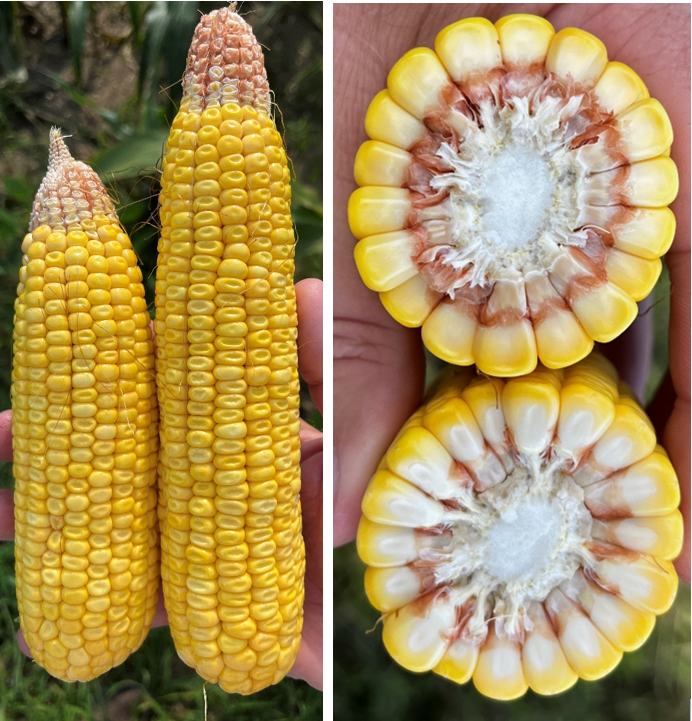
Diseases
Incidence of tar spot has increased slightly in Michigan, and according to MSU Extension field crop pathologist Marty Chilvers, that is likely to increase in the coming week as there is a lag between a rain event and a visible increase in lesions. However, I have not seen any tar spot yet, and Purdue’s field crop pathologist Darcy Telenko says incidence in Indiana has been rare. The current risk of tar spot infection is currently variable throughout the region according to the Tarspotter app. Chilvers says that fungicide applications in late August can protect yield if the disease severity is increasing.
The risk of white mold in soybean is variable depending on location, row spacing and use of irrigation. On the map below generated using the Sporecaster app, all fields input into the app were on 15-inch row spacing and had flowers present. However, there were very few flowers remaining in the fields I visited earlier this week. Only the Three Rivers and Berrien Springs locations were input as being irrigated. You can download the app for free and enter your fields using your parameters which will alter the risk rating. For example, choosing 30-inch irrigated soybean near Three Rivers with near-canopy closure had a risk level of less than half that of the Three Rivers location entered as 15-inch rows.
This would be a good time to scout for other foliar diseases in soybean before leaves begin to change color. For example, I visited a couple of fields in southern St. Joseph County with sudden death syndrome (SDS) at various stages throughout the field. If you see symptoms similar to the picture below, split the stems at the base of several plants longitudinally—if the inner stem is dark brown, it is brown stem rot, but if the stem looks healthy overall, it is SDS. There is nothing you can do about foliar diseases like that at this point, but you will want to keep it in mind when selecting disease-resistant varieties and considering seed treatments for those fields in the future.
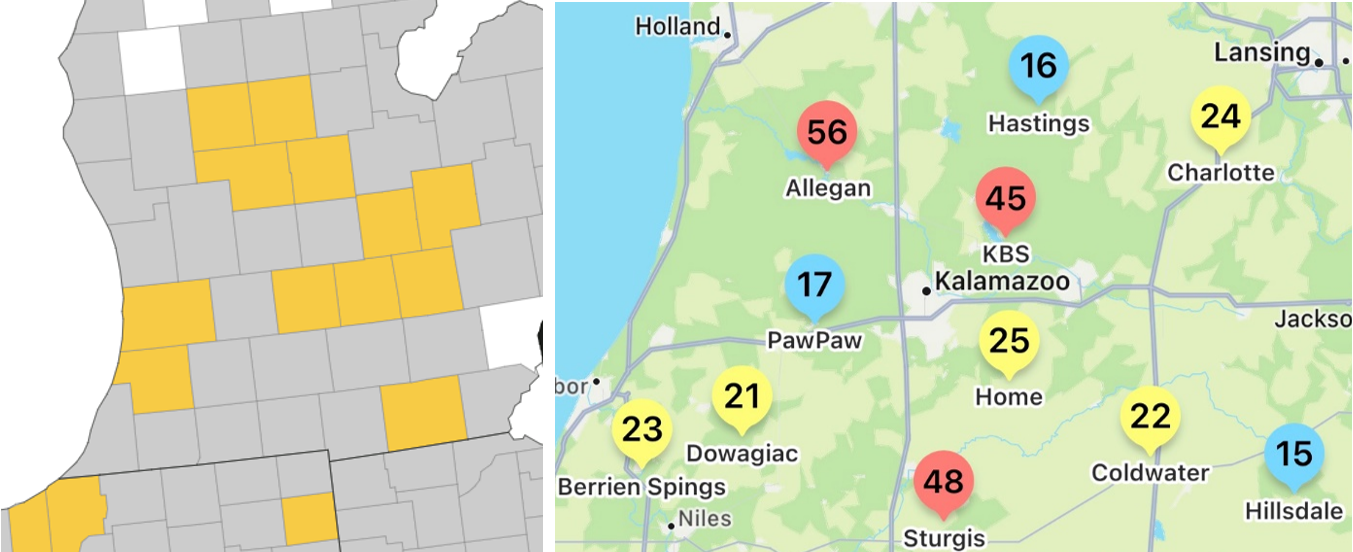
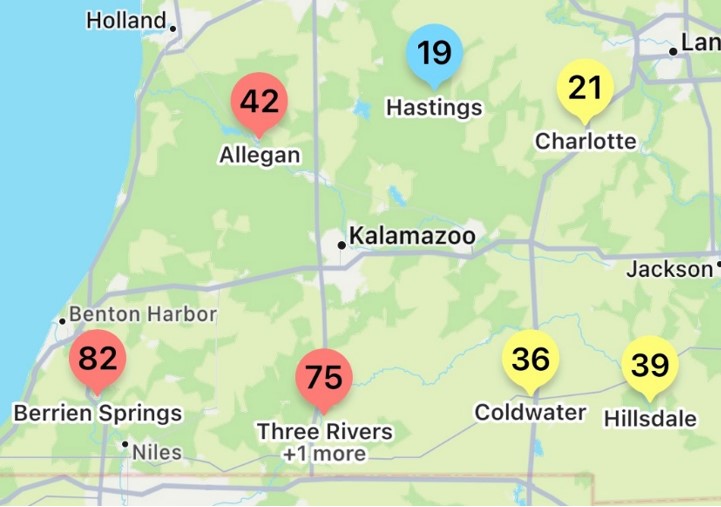
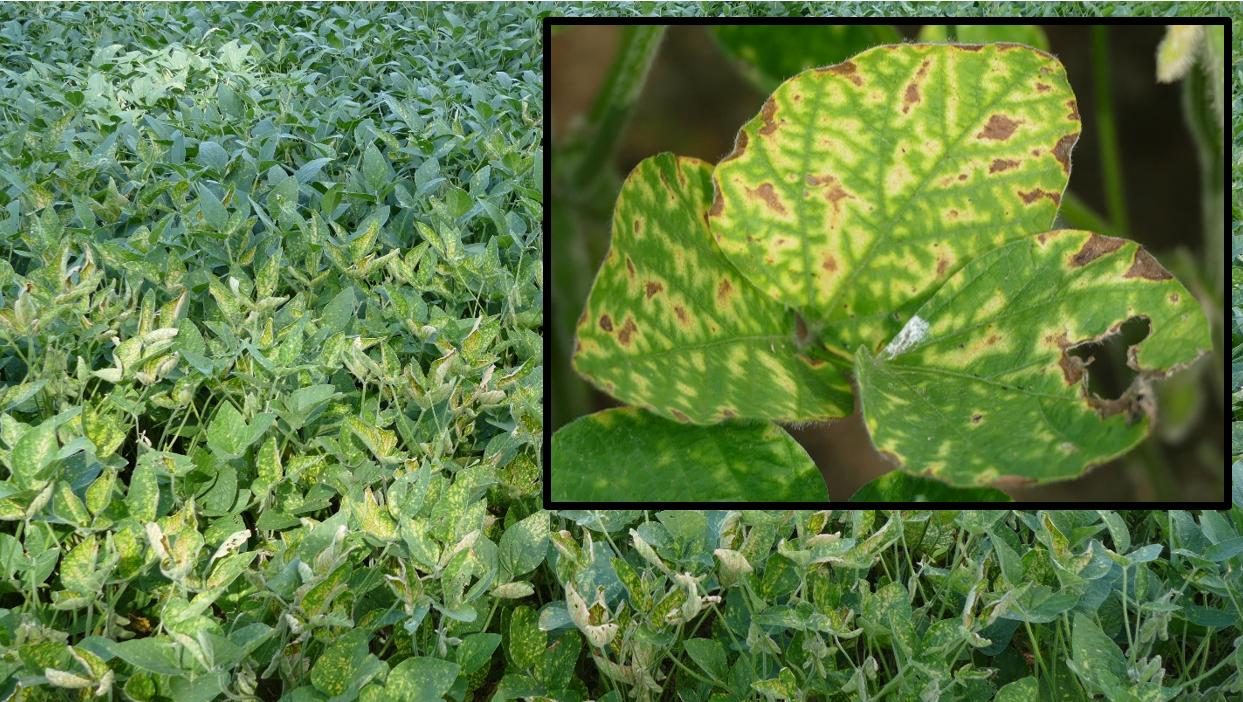
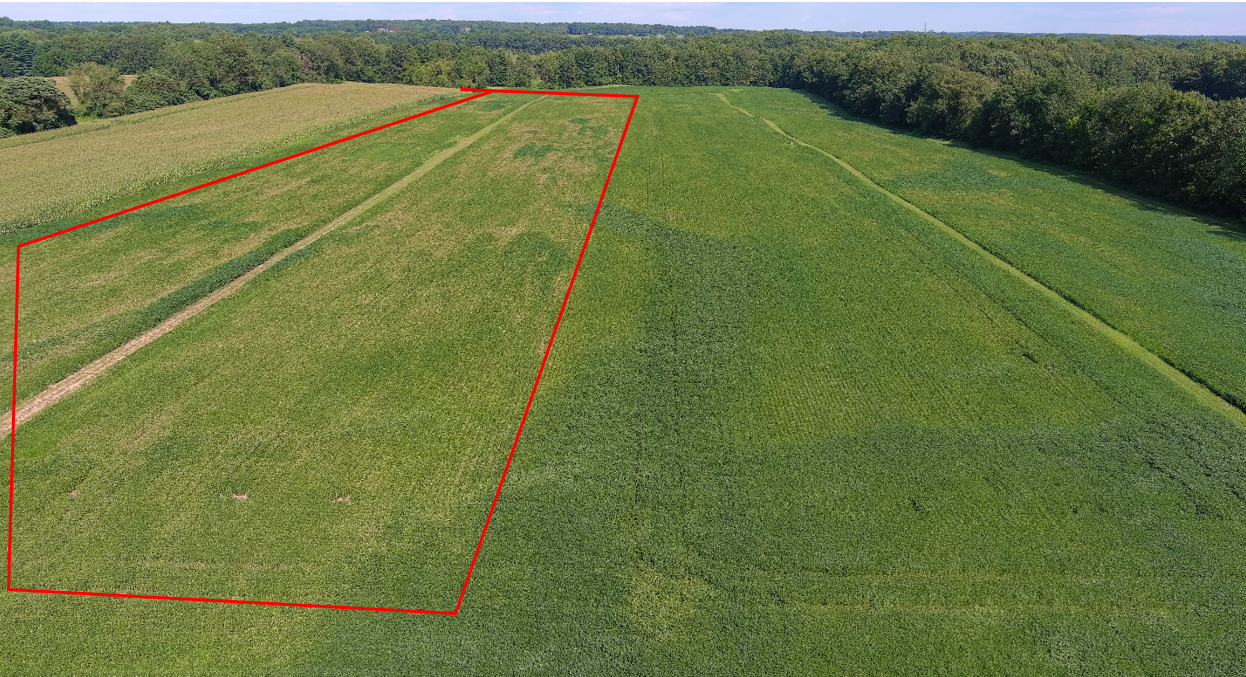
Irrigation
Corn at reproductive stages through beginning dent has a Kc of 1.2 and will require 1.2-1.3 inches this week. Corn water use will drop once we hit full dent with a Kc of 1.0. Soybeans from R3 (beginning pod) through R6 (full seed) also have a Kc of 1.2. Soybean water use will drop once we hit R7 (beginning maturity - one normal pod on the main stem has reached its mature pod color).
Field Crops Virtual Breakfast
Carbon market update was the topic of this week’s MSU Extension Field Crops Virtual Breakfast with agricultural economist Matt Gammans. Carbon credits, or carbon offsets, represent an amount of carbon that is sequestered or not emitted as carbon dioxide. Typically, a carbon credit is issued for a production practice change such as planting cover crops or implementing no-till. Additionality, the understanding that the implementation of a practice is in addition to what is currently done, is key as that is currently required for all carbon credit schemes. So, for example, farmers who have been no-till for thirty years cannot apply for credits associated with those past or current practices.
Gammans says that the market is still immature and the current price of carbon credits is still not high enough to make this a practical opportunity for most farmers. However, the price has been increasing, doubling since last summer, with reports from Indigo (one of the main carbon verifying programs in the U.S.) receiving $40 per ton of carbon. This would translate to roughly a $30 per ton payment to farmers, or roughly $9 per acre for planting cover crops on highly erodible soils.
Gammans referenced recent key legislation that impacts carbon markets, including the Growing Climate Solutions Act which has been stalled in the U.S. House of Representatives for the past year, and the NO EMITS Act which would add a soil transition incentive to USDA’s Environmental Quality Insurance Program (EQIP). He emphasized that it is important for farmers to not enroll in a private carbon program prior to enrolling in EQIP but rather to consider enrolling in EQIP and then looking for an opportunity to enroll in a carbon credit program on top of that.
Ag-related components of the recent Inflation Reduction Act of 2022 will add $8.5 billion to EQIP, mostly to increase cover crop acres, and $3 billion to the Conservation Stewardship Program for producers looking to expand conservation efforts. These policies and laws are likely to further increase the demand for carbon credits resulting in increased prices, meaning carbon programs would be more feasible for farmers to take part in moving forward.

If you were not able to join the session, the recordings will be closed-captioned and available at the Field Crops Virtual Breakfast webpage and the MSU Extension Field Crops Team social media platforms: Facebook, Spotify, YouTube, Apple Podcasts and Twitter.



 Print
Print Email
Email




